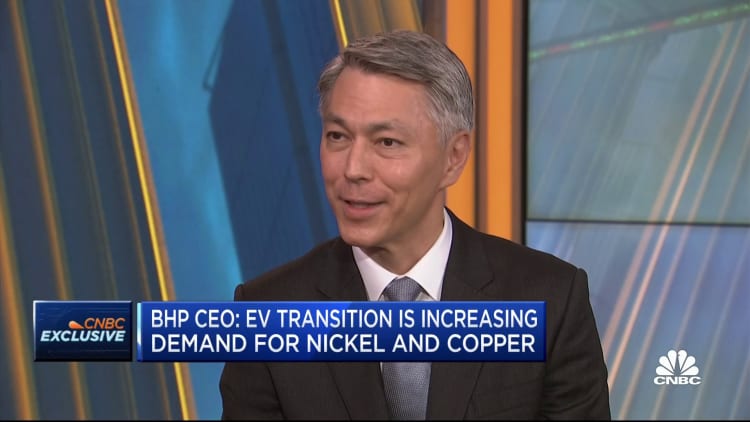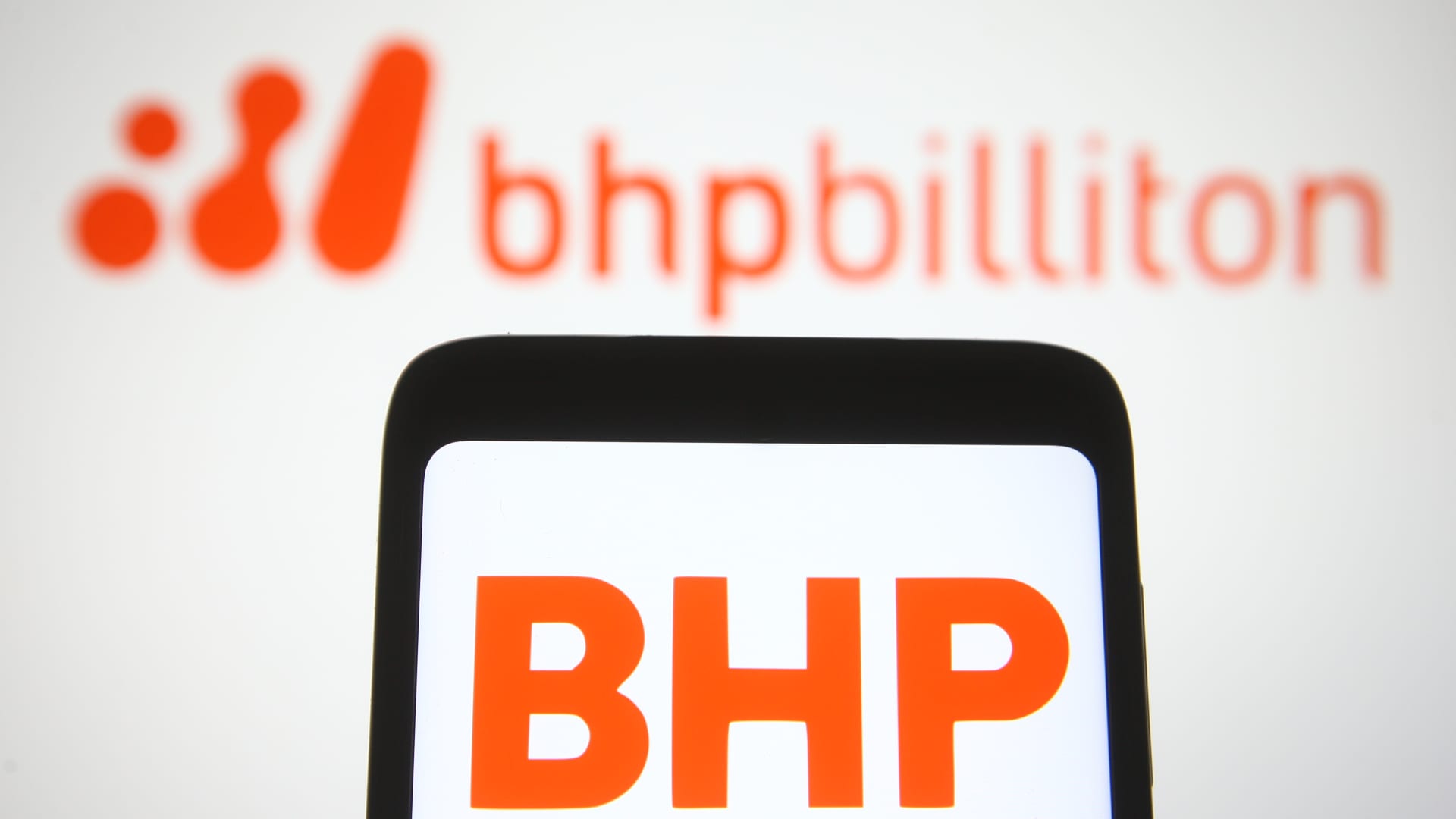In this photo illustration, BHP logo of a multinational mining, metals and petroleum company is seen displayed on a smartphone in front of BHP Billiton logo. The world’s largest listed miner was cautiously optimistic on a demand recovery in the developed world in the next 12 months but said it was not yet clear how effective stimulus policies have been in China, its biggest customer.
Sopa Images | Lightrocket | Getty Images
BHP Group on Tuesday logged first-half underlying profit that slightly beat analyst expectations, buoyed by strong iron ore prices, and said inflationary impacts were receding.
The world’s largest listed miner was cautiously optimistic on a demand recovery in the developed world in the next 12 months but said it was not yet clear how effective stimulus policies have been in China, its biggest customer.
It was more bullish on India, which it said “has considerable positive momentum behind it.”
BHP said it expects a “more balanced global economy and evidence that the worst of the general inflationary wave is behind us will have a positive impact on our industry in calendar year 2024.”
For the first-half, BHP’s strong revenue growth of 6% was underpinned by higher iron ore and copper prices and contributions from new projects, but was partially offset by lower energy coal prices.
BHP said underlying profit attributable to shareholders was $6.60 billion for the six months ended Dec. 31, unchanged from the previous year, but topping an LSEG estimate of $6.42 billion.
It declared an interim dividend of $0.72 per share, compared with $0.90 per share a year earlier. That beat Citi’s expectation of $0.68, and a Visible Alpha consensus of $0.70.
“(The) market should take a modestly higher dividend than expected as a reflection of BHP’s improving confidence regarding (the) outlook on commodity demand/prices,” analysts at Citi wrote.
Shares in BHP edged down 0.3% to A$45.91 amid a sour tone in resources stocks.

BHP, which announced a $2.5 billion impairment charge for its Western Australia Nickel business last week, said it sees the nickel industry facing “a difficult multi-year run,” amid a flood of new supply coming out of Indonesia.
“Our base case is that the market may rebalance by the late 2020s,” BHP said.
BHPÂ operates a nickel smelter and a refinery in Western Australia, employing 3,000 people, and has warned that the slump in nickel prices could slow development of its West Musgrave copper nickel project.
“You should be expecting that to be a decision in months, not years,” said Henry. “Clearly we weren’t expecting the nickel market to plunge as quickly and as significantly as it has,” he told analysts at a results briefing.
While it welcomed Australia’s moves to shore up the nickel sector though a production tax credit, BHP said that should not take the focus of ensuring “the right policy settings are in place to drive long term competitive positioning of Australia as a nation.”
The company wants the government to improve industrial relations policies, fiscal settings and permitting requirements, CEO Mike Henry said, but added that might not be enough for miners that have already put their operations into care and maintenance.
“Given just how significant the challenges in the nickel market are today, that may not be enough to alter course.”

